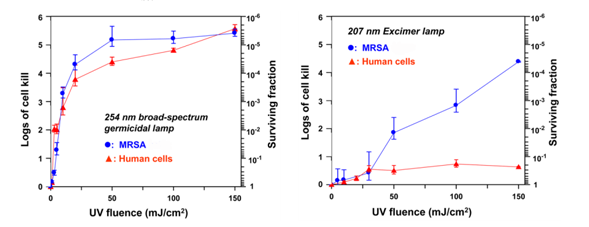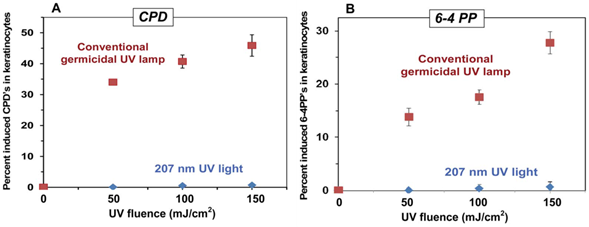Ushio and Columbia University Have Entered into Exclusive University and Research Agreements for Ultraviolet Disinfection Method to Reduce Microbial Infection
– Preventing Microbial Infection at Surgical Sites –
USHIO INC.(HQ: Tokyo, President and CEO: Kenji Hamashima) today announced that the company has entered into exclusive license and research agreements for narrowband-spectrum ultraviolet light technology with Columbia University (location: New York City, USA). The aim is to promote research and development as well as productization of an Ultraviolet Disinfection Method that utilizes UV radiation within a particular wavelength range to, for example, prevent surgical site infection.
Surgical site infection due to in-hospital infection is a serious problem; more than 8,000 patients in the United States alone die from in-hospital infection, accounting for $3 billion to $10 billion in annual health care costs.
Dr. David Brenner, Director of the Center for Radiological Research at the Columbia University Medical Center, and his team have developed a disinfection system that selectively kills bacteria and viruses without damaging human cells/tissues. The system, which uses a narrowband-spectrum ultraviolet light technology — for example, the ultraviolet light technology of excimer lamps that produce radiation of a particular wavelength range — can disinfect bacteria and viruses such as MRSA, influenza, MERS-CoV, and SERS-CoV as well as viruses including the Ebola virus.
USHIO was the first company in the world to develop and practically apply excimer lamps,and has manufactured and distributed photo-cleaning products for use in the manufacturing processes of semiconductors and liquid crystal displays. The company also has recently started research on usage of excimer lamps for water processing and deodorization, and is now working on to extend the applications of far-ultraviolet light excimer lamps.
With the execution of the agreements with Columbia University, USHIO is now promoting the development of excimer lamps’ new application to prevent microbial infection in a medical setting. Clinical research in the USA, Singapore, Japan and other places around the world will start from the winter of 2015, with the aim of producing a product sometime around the year 2017. Additionally, the company aims to expand into the sanitary and healthcare fields, and create a business around a safe and foolproof system for disinfection using excimer lamps.
Narrowband Spectrum Ultraviolet Light Technology
1. Wavelength
The method uses a range of UV wavelengths, from about 200nm to 230nm. For example, KrBr (207nm) and/or KrCl (222nm) can be used, which can be created by cutting a wavelength of about 230nm or more of far-ultraviolet light generated by excimer lamps.
This UV wavelength range, including these specific UV wavelengths, can penetrate and kill bacteria, but at the cellular level they do not reach the nucleus of human cells, and at the tissue level they will not reach the sensitive cells in the skin epidermis or the eye lens. The latest research proves that the method maintains anti-microbial advantages of conventional UV lamps while drastically reducing biological damage in human cells compared with conventional UV lamps.
2. Potential Applications of the Technology
(1) Minimize surgical-site bacterial infections,particularly from drug-resistant bacteria such as MRSA
(2) Minimize airborne and direct-contact infection of viruses, such as H1N1 (bird influenza),
SARS-CoV (SARS coronavirus), MERS-CoV(MERS coronavirus), dengue, and Ebola.
(3) Treat infected chronic wounds.
(4) Add an anti-microbial function to devices such as hand dryers.
Data
Fig.1. Experiment involving UV radiation of MRSA and human cells

Figure 1. The graph on the left compares the killing of MRSA and human cells when using a conventional broad-spectrum germicidal UV lamp. Cell killing is shown relative to zero-fluence controls, expressed as surviving fraction, or as logs of cell kill (-log10[survivingfraction]), produced by different fluences of UV exposure from a conventional broad-spectrum germicidal UV lamp (peak emission: 254nm). Data are shown for methicillin- resistant S. aureus cells (MRSA strain USA300) and for AG1522 normal human fibroblasts. The graph on the right shows the corresponding data when using our 207-nm excimer lamp.
Fig. 2. CPD and 6-4PP measurement of UV radiation experiment by UV207nm and UV254nm to human tissue model

Figure 2. Yields of pre-mutagenic skin DNA lesions in epidermal keratinocytes, measured in a 3-D human skin tissue model, induced by conventional broad-spectrum germicidal UV radiation (■) and by 207-nm UV light (◆).
A:cyclobutane pyrimidine dimers (CPD); B: pyrimidine-pyrimidone 6-4photoproducts (6-4PP). In both graphs, zero-fluence control measurements(<1%) have been subtracted from the data.
Buonanno, M.; Randers-Pehrson, G.; Bigelow A.W.;Trivedi, S.; Lowy, F.D.; Spotnitz, H.M.; Hammer, S.M.; Brenner, D.J. 207-nmUV Light – A Promising Tool for Safe Low-Cost Reduction of Surgical Site Infections. I: In Vitro Studies.PLoS ONE, DOI: 101371/journalpone0076968. 2013 PMCID: PMC3797730
About Columbia University Medical Center
Columbia University Medical Center provides international leadership in basic, preclinical, and clinical research; medical and health sciences education; and patient care. Columbia University Medical Center is home to the largest medical research enterprise in New York City and State and one of the largest faculty medical practices in the Northeast. For more information, visit cumc.columbia.edu or columbiadoctors.org .
*Development and research related to this ultraviolet light technology at Columbia University was made possible by funding and support from the Columbia-Coulter Translational Research Partnership and through private donations.
